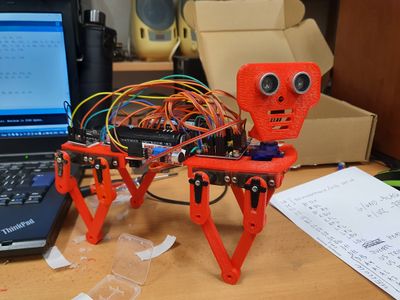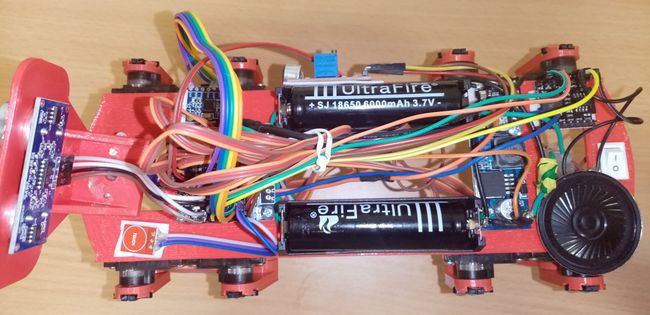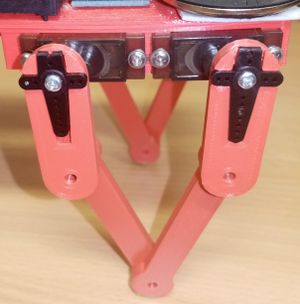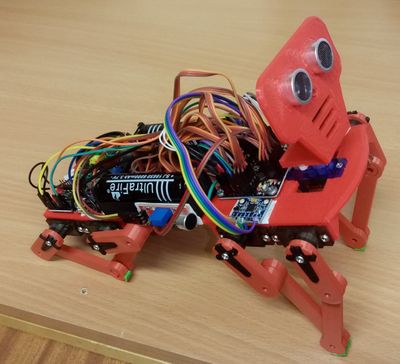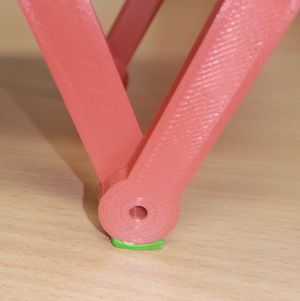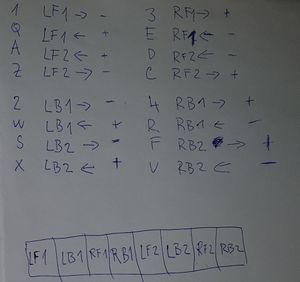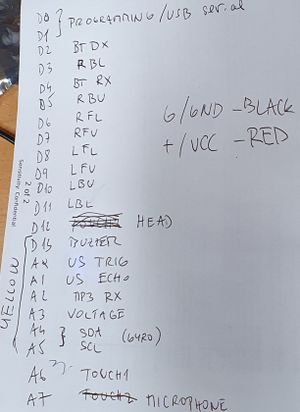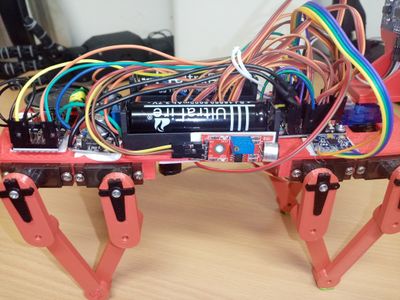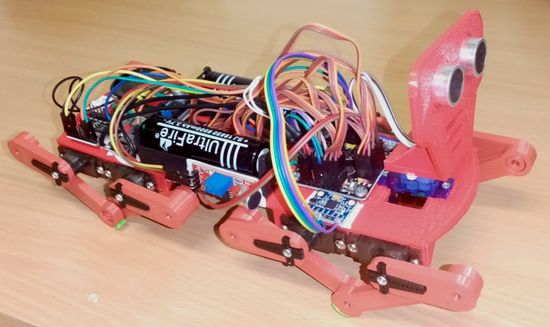Kocur v Cizmach - Aljaž Andolšek and Ursek Slivsek
Contents
Task
The first task was to build the robot named 'Kocur v Cizmah'. After that the main goal was to create/programe a coreography in order to get the robot to walk forward, backward and to turn. An additional aim was to make use of the ultrasonic sensor and gyro so the robot could orient itself around its enivironment.
Progress
-12.1.22-17.1.22; robot assembly (parts of skeleton made from 3D printer + arduino + sensors + servos)
-17.1.22-20.1.22; additional 3D printing (1.issue)
-20.1.22-5.2.22; programming (walking coreography + ultrasonic sensor + 2.issue) + additional assembly (rubber paddings added to feet for more efficient walking)
Issues
1. the original 3D printed legs were to tight around their joints to move efficiently. Additionaly, the holes for the servos were to small. Legs were printed again.
2. Due to the software, arduino was not detecting the power supply correctly.
Solution
Walking coreography: The software for programming the robot had been borrowed from another robot. After running the software we could programme the coreography. However, before we can programme the coreography we have to calibrate the servos at a 90 degrees angle and then add the legs. The robot has 8 servos moving 4 legs, meaning that we define the position of one leg through the use of two servos. For each leg to move forward efficiently, it had to be in the air, so before moving a leg, we had to tilt the whole robot with the other three legs. This was repeated for all legs and finally, when all legs were positioned forward, the whole body could move forward.
forward movement (each line is the position of all the servos at a given step of the sequence, the last number is the length of the delay between each step):
75 75 105 105 105 105 75 75 1 100 100 80 80 135 135 45 45 1 70 90 100 80 165 145 25 45 1 70 90 100 110 165 145 25 15 1 70 90 100 145 165 145 25 90 1 100 100 80 145 135 135 45 90 1 100 100 90 145 135 135 35 90 1 100 70 90 145 135 165 35 90 1 100 40 90 145 135 90 35 90 1 75 40 90 155 160 90 35 90 1 45 40 90 155 90 90 35 90 1 45 40 90 125 90 90 60 90 1 45 25 90 135 90 105 60 80 1 45 25 120 135 90 105 30 80 1 45 25 150 135 90 105 90 80 1
backward movement:
45 25 150 135 90 105 90 80 1 45 25 120 135 90 105 30 80 1 45 25 90 135 90 105 60 80 1 45 40 90 125 90 90 60 90 1 45 40 90 155 90 90 35 90 1 75 40 90 155 160 90 35 90 1 100 40 90 145 135 90 35 90 1 100 70 90 145 135 165 35 90 1 100 100 90 145 135 135 35 90 1 100 100 80 145 135 135 45 90 1 70 90 100 145 165 145 25 90 1 70 90 100 110 165 145 25 15 1 70 90 100 80 165 145 25 45 1 100 100 80 80 135 135 45 45 1 75 75 105 105 105 105 75 75 1
Left turn:
90 41 130 108 90 126 134 65 5 35 77 130 128 80 126 134 32 5 19 77 130 152 80 130 134 128 5 43 39 163 168 30 21 165 63 5 90 90 90 90 90 90 90 90 5
Videos
Links
Arduino code [[2]]
3D printer schematics for robot skeleton File:Cheetah.zip
